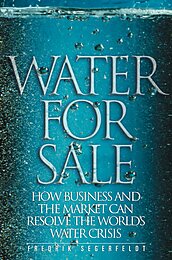More than a billion people worldwide lack access to clean, safe water. Some 12 million people die annually as a result, and millions more are struck by diseases associated with the lack of sanitary water. Those afflicted live mainly in poor countries where water distribution is run by inefficient public providers—97 percent of all water distribution in poor countries is public.
In recent years, a small number of developing country governments have turned to the private sector for help. Swedish activist and author Fredrik Segerfeldt shows how millions of new households in places as diverse as Argentina, the Philippines, Cambodia, and Morocco, have been connected to water networks as a result of private investment.
But “privatization” of water distribution has met with stiff resistance. A coalition of NGOs and special interests argues that water is a human right and that the private sector would hike rates beyond the ability of the poor to pay. Segerfeldt reviews cases of privatization and shows that most claims of the anti-privatization lobby are unfounded.
The very poor who are not connected to any water network have the most to gain from privatization since the rates they pay — 12 times more on average than the price of network water — fall dramatically when private companies connect them to the network. Using statistical data Segerfeldt warns against the tragic consequences of paying heed to those who are driven by an anti-business ideological agenda rather than a desire to try policies that actually help the poor.
